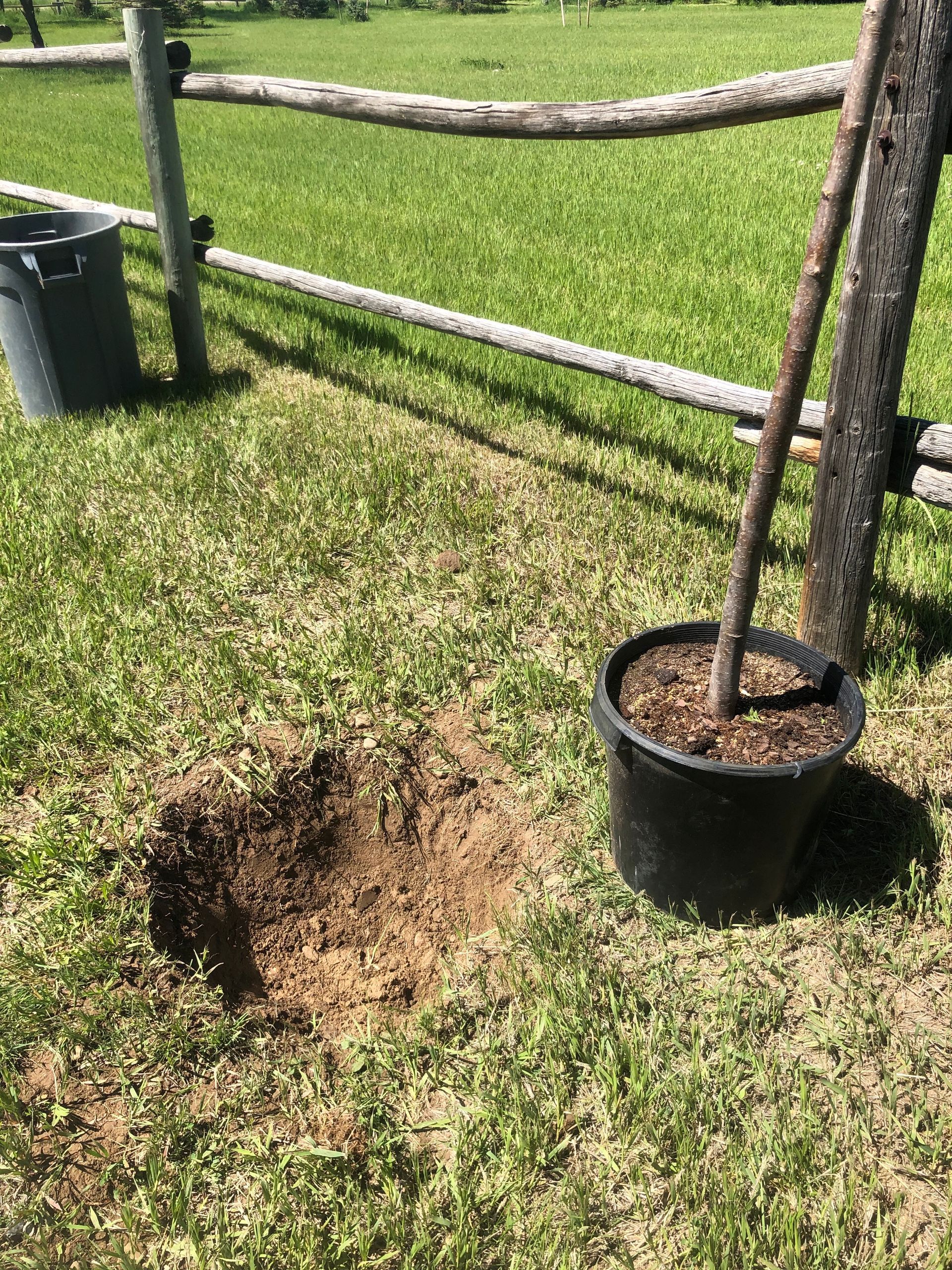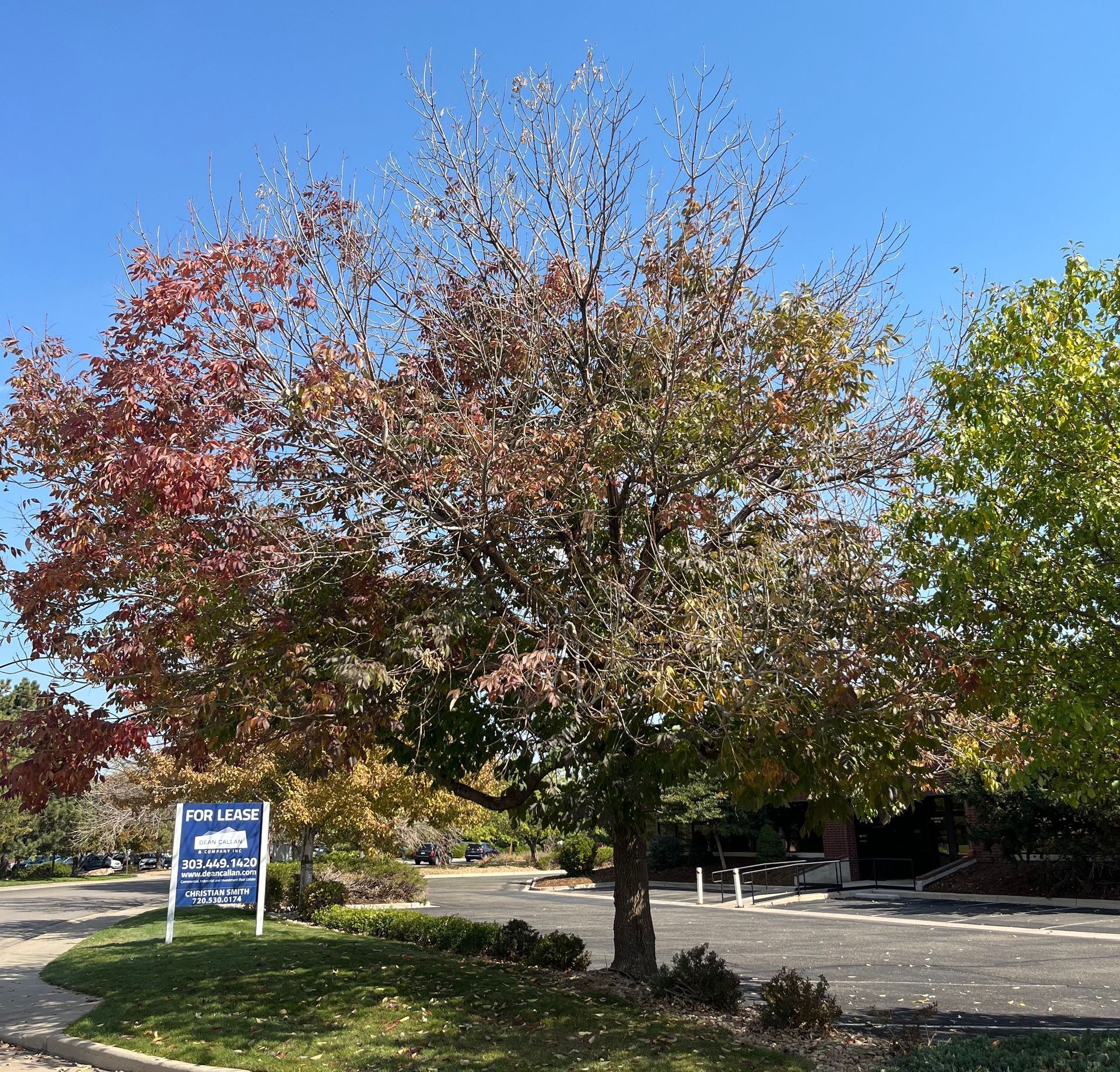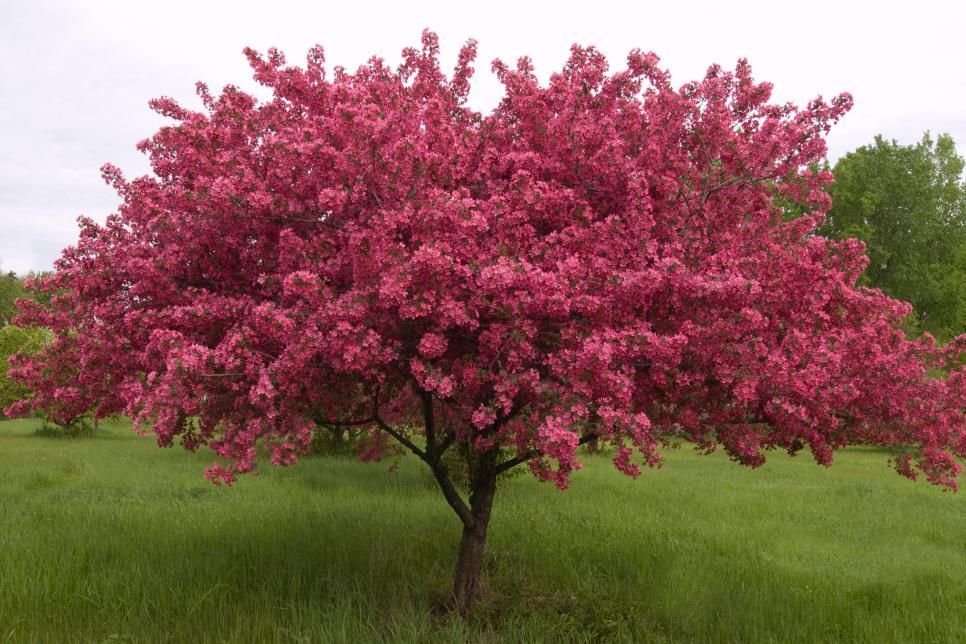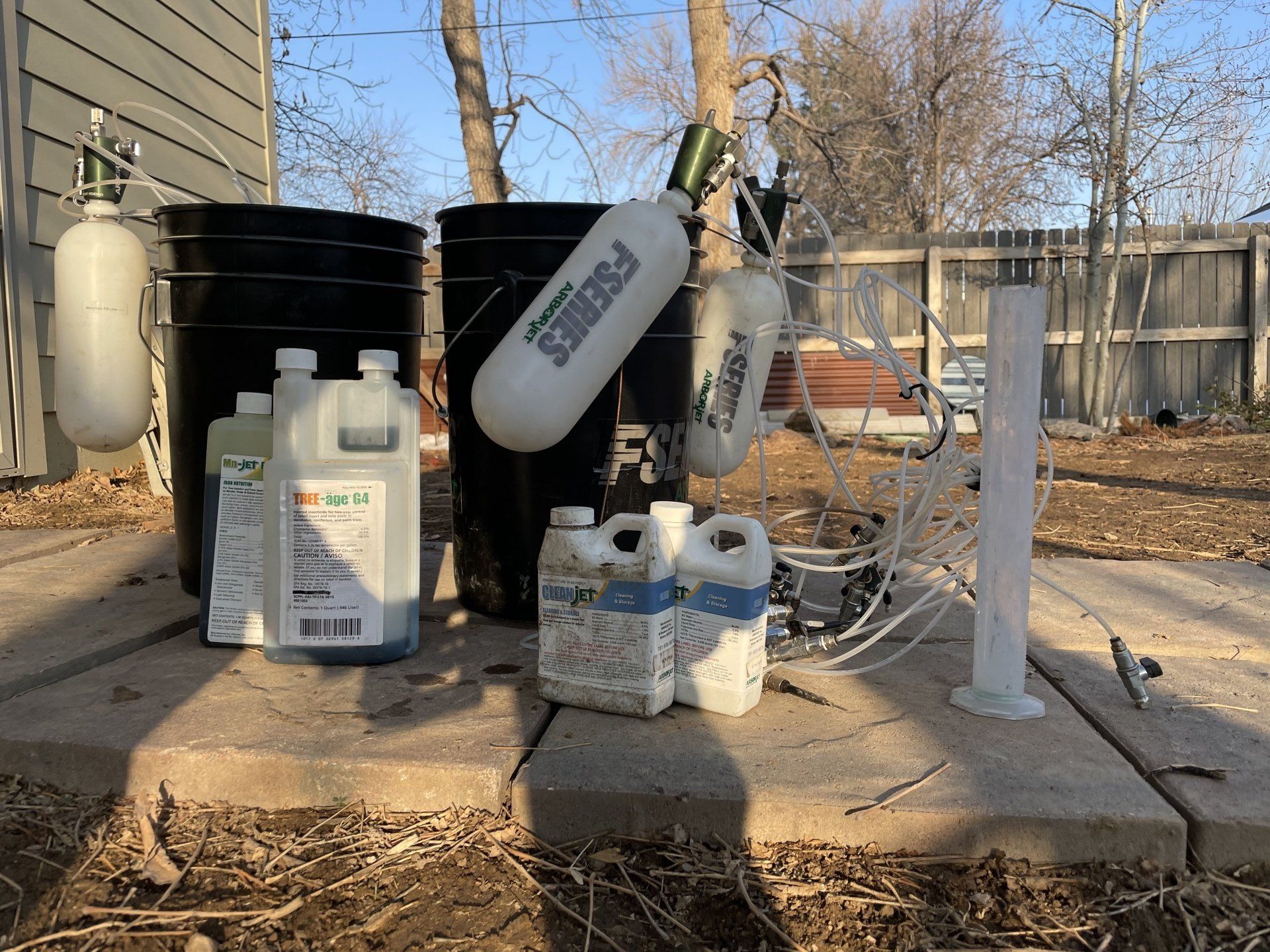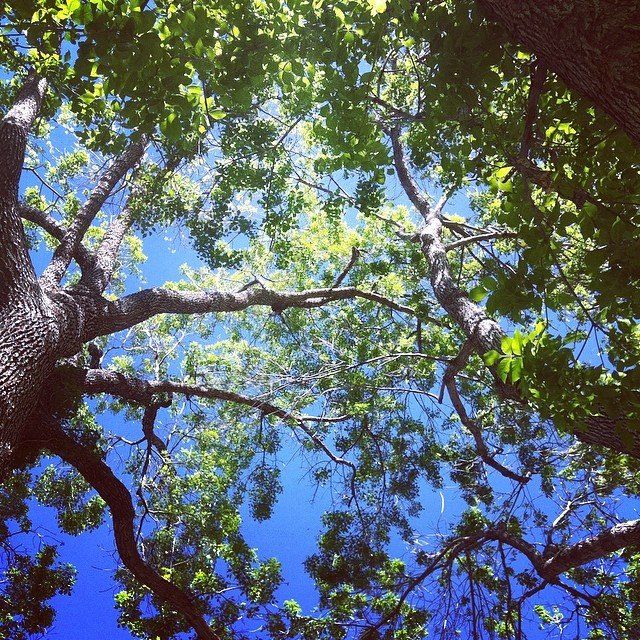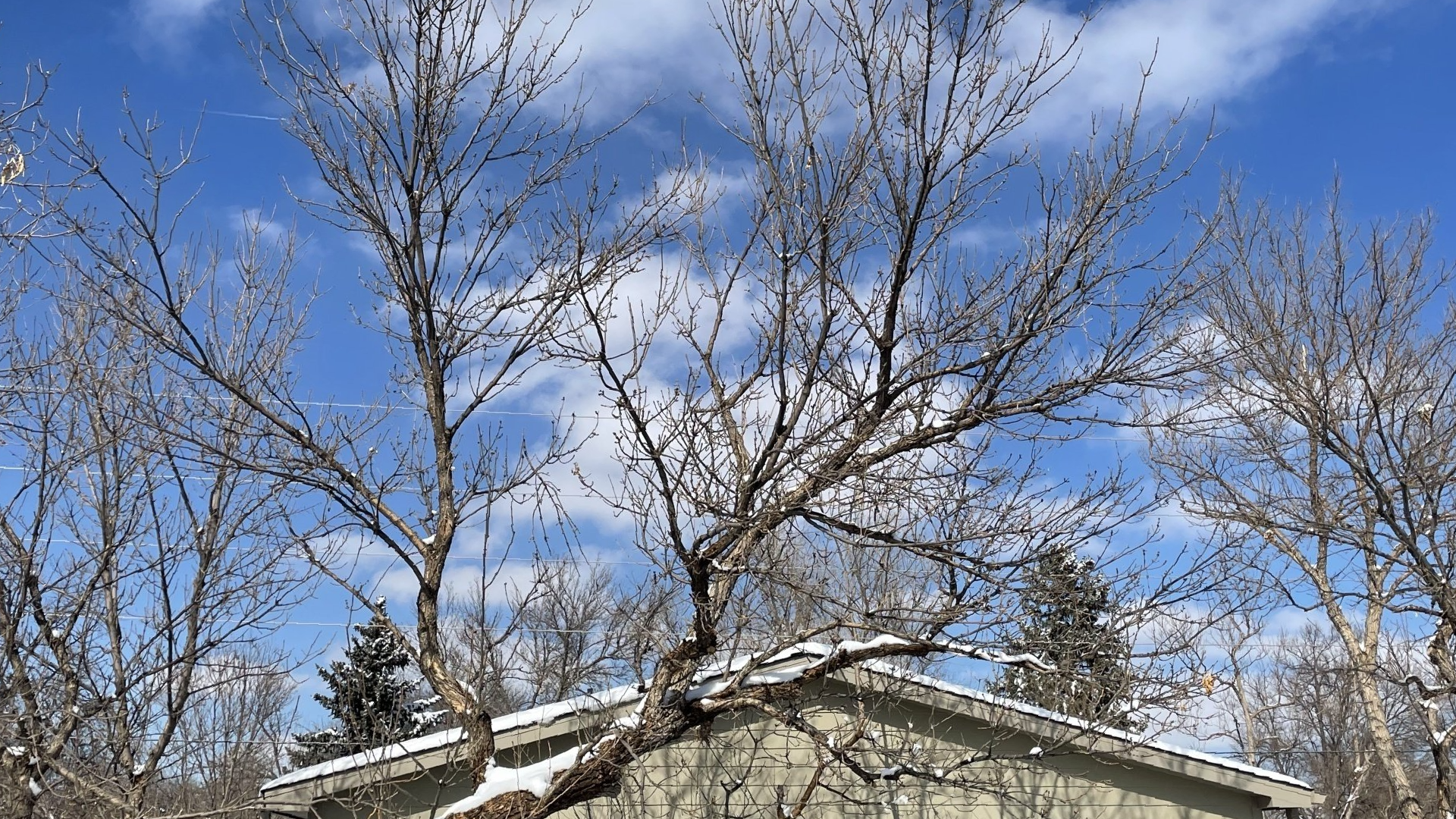Why is My Tree Yellow?
Lucas Capachin - Board Certified Master Arborist
Why is My Tree Yellow?
Chlorosis - Micronutrient Deficiency in Oaks, Maples and Pear Trees
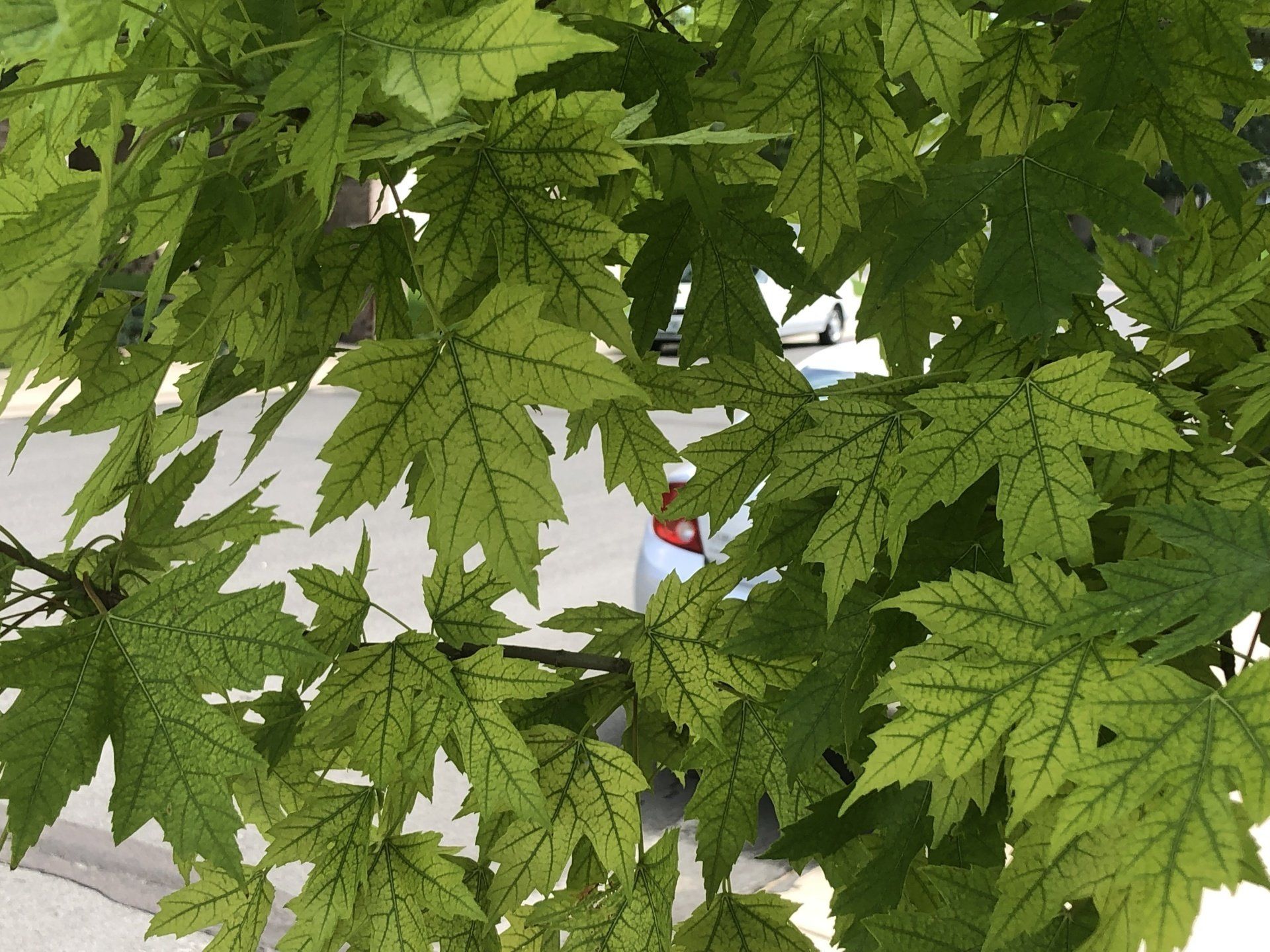
Causes
The main cause of iron unavailability in soil is low pH. Colorado's clay soil is too alkaline, which causes iron to oxidize in the soil and form insoluble compounds which cannot be absorbed by tree roots. The obvious fix would be just to change the pH of the soil, but due to the buffering capacity of the soil that is near impossible. Buffering means that the clay (which makes up most of the soil in Colorado), will react quickly with any acid that is introduced and will not result in any change to the soil pH. The only solution is to replace or amend all of the soil under your tree. But this is just not feasible in a well established landscape.
Soil Amendments
Fixing inadequate soil is not an overnight process. This will not quickly fix a nutrient deficiency but over the course of years it will create better soil and lead to healthier trees. Compost products are good because the organic matter helps to retain moisture. The compost material will break down adding nutrients to the soil, and if you pick the correct product it will lower the pH of the soil - allowing trees to absorb nutrients better. Many products will work, but listed below is one I like and have used before. This is a pine bark product which lowers pH and it is small enough to rake into your grass. I recommend spreading it after mowing or at the end of the growing season to give it some time to settle into the soil before a mower blows it away. This can be done multiple times a year and generally can be done without any risk of harming your tree. This also leads to healthier soil for your grass and any other trees or plants in the area.
This is the product I like. Many nurseries carry it as well, but this was the only place I could find it listed online.
https://www.murdochs.com/products/garden-center/soil/yard-care-soil-pep/
Chelated Micronutrients
Since we cannot change the properties of the soil quickly enough to help trees that are already stressed, the only solution is to give them what they need. Chelated micronutrients have metal ions locked up in compounds that are stable in the soil. There are many different chelates for each micronutrient and their stability in soil varies greatly. Using the wrong chelated fertilizer won't work because if it is not stable in the soil it will just react and wash away.
Leibig's Law of The Minimum
This is a principle that states that plant growth will be limited by the micronutrient most deficient. This means that even if a deficient micronutrient is added, plant health will only be improved to the point that another micronutrient becomes the limiting factor. This is important when treating chlorosis because even though the iron may be available to a tree, if there is not enough manganese the tree will still not fully green up. For this reason it is advisable to supplement soil with all micronutrients that are less available in alkaline soils. The nutrients we advise you use are iron, manganese, and zinc.
Selecting Which Chelates to Use
Because certain chelates are more stable in alkaline soils it is very important to select the right one. Here is the list of the chelates that we recommend:
If you just get chelated micronutrients from the local retailer, it will likely not include the proper chelates and they will not be as effective. These micronutrients are specially formulated for use in soils like ours.
Iron (Fe) EDDHA
https://www.amazon.com/Grow-More-6546-Chelate-1-Pound/dp/B00BWE2CUE/
Manganese (Mn) EDTA
https://www.amazon.com/Manganese-Greenway-Biotech-Hydroponics-Fertilizer/dp/B0773XQFDH/
Zinc (Zn) EDTA
https://www.amazon.com/Chelated-Greenway-Biotech-Hydroponics-Fertilizer/dp/B077BKZ8XL/
These can be spread directly onto the soil. Soil treatment should occur in the spring before the tree leafs out. Nutrients should be spread anywhere where the trees roots are. They are mostly directly under the canopy if the tree but can spread far beyond the canopy.
Trunk Injection
Directly injecting micronutrients is a more reliable method to get nutrients into the tree. This requires drilling holes into the tree. Drilling into the tree should be considered a last resort and only for trees that are too far into decline or where adding nutrients to soil has not been effective. This requires specialized equipment and must be done by a tree care professional. Trunk injections should occur in the fall just before the tree loses all of its leaves.
We put out these informative articles to help you learn about and identify problems with your trees. Our goal is to try to help people better maintain their trees so that they may appreciate the benefits which their trees provide and to improve the health and longevity of the urban forest. If you are having issues with your tree or have a question you need answered about your tree please call, text, or email us.
